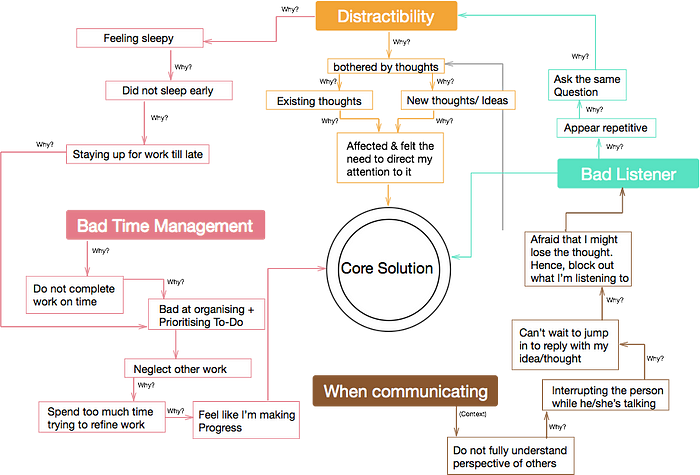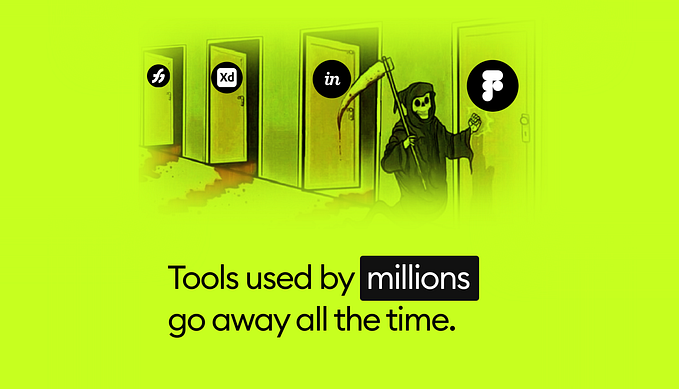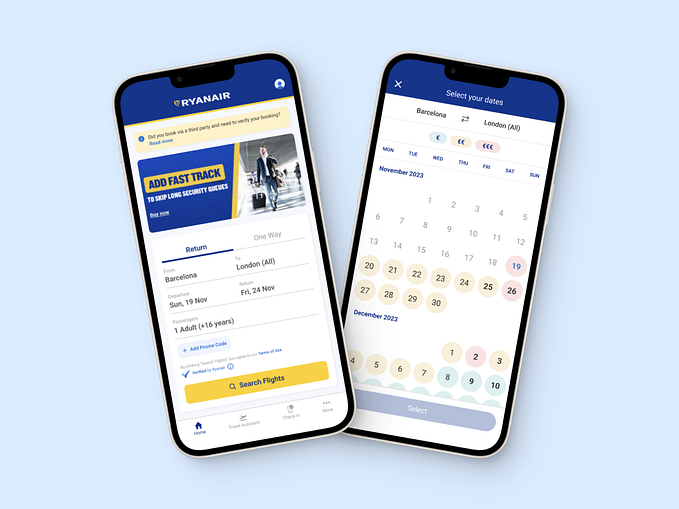
This article documents my journey on how I applied User Experience Design principles on myself to learn more about myself. This has tremendously improved my ability to built more meaningful relationships with people on both a personal and professional level.
A little background of UX:
The easiest way to understand User Experience(UX) is to give you a scenario to put yourself in. From the time you wake up, to the time you sleep, everything you see and interact with makes up an experience. Our role as UX designers is to create intuition within seconds.
“What we can do in terms of the little ways we can make life better for people is to make products that speak to the needs of people that they don’t even know that they have” — JD Buckley
I’m Moses, and this is ME :P
I would like to think of myself as a playful donkey that loves poking annoyance at others and make people laugh. I am really energetic, and sometimes i find it hard to put myself to sleep whenever a hair-standing idea pops in! I’m in love with adrenaline sports such as wake boarding and climbing, and i love having conversations with people from all walks of life.
Step 1: User Interview
In order to find out more about myself, I got my fellow project mates to provide their most candid feedback on their experience working with me, through an interview.

Here are the interview questions asked:

Throughout the 8 interviews, I was put on an emotional roller-coaster. It always rolled off with an aperitif, something pleasant to listen to first. Thereafter, it would quickly transition into the shortcomings. Ahhh, at that point, that was when my defence mechanism started acting up. I had strong urges to interrupt my peers and quickly explain myself, but I clenched my teeth and listen further.
As it turns out, patiently listening to my shortcomings and probing further and further, was a wise thing to do. My friends kept spilling out valuable insights that greatly aided me on my research.
Some of the tips while gathering feedback would be:
- Keep your interviewees going by asking the following questions: A) Tell me more about that.. B) Help me understand better.. C) What do you mean by..
- Embrace awkward silence: Often the best insights come up when participants feel the need to fill silent voids or have the opportunity to remain silent and reflect.
Below are some of the key insights gathered from my group mates.
“ Listen with the intent to reply not understand” — Peter Cho
“ Lack of focus and distracted during project discussion” — Colin Wan
“ Magical at how he can strike a conversation with anyone.” — AiLin Ong
Step 2: Affinity Mapping
I started making sense of every single data by writing them down on post-it notes and grouping them according to the category ‘Pain’, ‘Pleasure’, and ‘Advise & Encouragement’, as seen below.

This gave me a bird's eye view of all the feedback gathered, and I could easily identify and group similar trends together. They were then given an essence(header) that could represent each group. For example, similar trends such as “Lack of Focus”, “Distracted during lectures”, and “Focus more” were grouped under the essence ‘Easily Distracted’.
“ To architect the experiences of tomorrow, you must first design the interactions of today” — Chase Buckley
Step 3: Essences identified

From the above analysis, it gave me a good understanding of my strengths and weaknesses.
It’s helpful to know what my strengths are, so that I could make a conscious effort to build and amplify them.
For my shortcomings on the other hand, I probed deeper to understand the root cause of why my group mates had that perception of me. Understanding this is crucial so that I am aware of them, and i could weigh the need to eliminate them if they are deem destructive.
I went back to the drawing board, to my affinity map again. Only this time, it was done more meticulously. I glued my eyes on the groupings within the Essence, and tried to gather any hints that might lead me to my answers. It is important at the same time to keep asking ‘why’.
“if you have not asked yourself more than 10 whys, you have not asked enough” – Vien Vu
Soon, I discovered that my pain points were inter-related. And that inspired me to further map out the relationship between the essences as seen below. The beauty unveiled were an obvious core problem that snowballed and created some of the other problems. One core problem in particular is ‘bad at organising and prioritising work’.

Below shows a clear break down of the different problems identified. Next to it are the potential solutions brainstormed.

Solution to poor work priorities: Pareto and His Garden: 80/20 principle
I repeatedly find myself in a situation where I’m unsure of how to prioritise my work, especially when I have a long to-do-list, and work is constantly piled up. I found this extremely nerve-wrecking as it takes stress along.
I decided to apply the 80/20 principle, and asked myself the following two questions:
- What 20% of sources are causing 80% of my problems and unhappiness
- What 20% of sources are resulting in 80% of my desired outcome and happiness
I stopped everything I was working on, and focus intently on my long list of to-dos. What shocked me was that 70% of the work listed only yearns 10% of the total progress. There are many work that focuses too much on research that it lacks execution. As I looked back at the projects I had done previously, I was appalled by the huge amount of waste spent on unneccessary work that could be eliminated.
It was difficult to face the harsh truth of picking out those bad apples and eliminating them because, you would always feel there is a need for them. Through this episode, it has helped me to free up more time, and this means more sleep. I had learnt to ask myself the following question; if there is one thing i could accomplished today, will that satisfy my day?
What further contributes to the effectiveness of this method was applying Parkinson’s Law; the magic of the imminent deadline. If you were given 24 hours to complete a project, the time pressure forces you to focus on execution. In addition, it gets your mind to be intensely focus on your objectives and minimise all distractibility.
The best solution is to identify the few critical tasks that contribute most to your work and schedule them with very short and clear deadlines.
Solution to bad listening: Heuristics for better conversation
I often get distracted when I work in groups. My mind would start to wander when new thoughts pop in, or I would have the urges to interrupt another person’s conversation to contribute my ideas. Overtime, this affects the dynamics within the group as they get irritated and frustrated working with me.
While trying to come up with a solution, a quote by Brian Miller stuck in my mind. It inspired me to create a set of check-list(heuristic) to remind myself to become a better listener.
The quote goes like this
“I never have trouble meeting new people, making new friends, and getting into relationship, but I’ve always struggle to maintain them.” — Brian Miller


Morning Pages: Filtering unwanted thoughts

When Morning Pages was first introduced to me by Luke Miller, my instructor at General Assembly, I underestimated the usefulness of this exercise.
To expand on what morning pages is; it is taking 5 minutes of your time every morning to document all your existing thoughts/feelings/negative-positive emotions, and practically anything that might be bothering you before kick-starting your day.
The purpose of this exercise is to flush away all existing thoughts that is bothering you so that you can fully concentrate on the tasking’s for the day.
“I’ve learnt that sometimes it’s not about rushing to find an answer to a burning question, but leaving the question in your head, and eventually when you’re able to live up to the question, you will find the answer ”— Moses
Managing Expectation of Employers
After becoming more aware of my strengths and weaknesses and understanding how I can become a better team player, I moved on to understand the expectations of employers when hiring UX researchers/designers. I looked into how I could improve myself to become a better UX Designer and also what was expected of me if I were to work for a company.
Comparison Analysis
I began by doing a comparison analysis between what employers in the industry were looking for and the current skill set which I was equipped with. This helped me to identify areas which required the most attention, or in other words areas which I needed to improve in to meet the expectations of employers.


Meet Jordan, the man who used to work for the late Steve Jobs !

I was very humbled to be part of an audience sitting in one of the talks given by Jordan at Yahoo!
He said a quote that struck me. It says “success is about focus, focus is about discipline, and discipline is about saying no.
Being an energetic and ambitious person, one of my weakness is saying no to opportunities. I get really excited whenever people share their endeavours, and invites me to be a part of it. I find it difficult to say no despite having a lot on my plate.
One of the huge trade-offs is compromising on the quality of work delivered. Multi-tasking across multiple projects just means I do not have enough attention span and empathy to focus deeply on one within a short given deadline. Hence, producing mediocre work which I do not feel comfortable delivering.
In retrospective, Jordans’ quote spoke to me such that having the discipline to say no, even when the opportunities presented are attractive, is a very sexy thing to do not just for yourself, but also for the people you are committed to work for.
In Conclusion..
I’ve learnt that our work is centred around human-centric dynamic. Everything we do is about building meaningful connection with people, and collectively create amazing products and services for humanity.
“ Our world is a shared experience, fractured by individual perspective. Imagine everyone feel understood” — Brian Miller
I can still vividly remember that on our last day of class, my classmate Heleena wrote me a note which got me thinking a lot. It said:
“I didn’t get to work with you but I know you have a lot to offer. You maybe just haven’t figured out how to give it yet.” — Heleena Panicker
Now that I am one step closer to finding out more about myself, I would like to thank those who have contributed greatly to this journey of mine especially Vernon Heng and Cassandra Lai I am deeply thankful that I had all of you there supporting me and constantly motivating me to push forward
I hope that all of you have enjoyed this article as much i as i do writing it!
Yours Truly, Moses Ong
Reference
Resources & Inspiration I’ve looked up on:
1. The unexpected benefit of celebrating failure
2. 10 ways to have a better conversation
3. How to Magically Connect with Anyone
4. The framework for brainstorming anything — Jonathan Courtney
5. Four Hour Work Week
6. How to multiply your time








